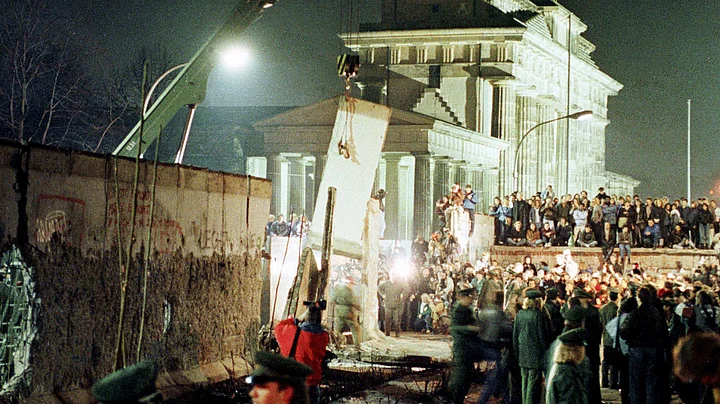One balmy spring evening in Stanford, California, I went to my international relations class expecting it to be much like any other, where we discussed global events in the hope of understanding the world a little bit better. Yet, that particular day remains etched in my memory because I got to hold a piece of history in my palm.
For someone who thrives on international politics and its history, no moment better reflects the shift in geopolitics than the fall of the Berlin Wall. Prior to that evening, my experience of the event was limited to what I could gather from books, articles and movies; on that day, I got an insightful first-person account of life in that era.
Our professor, Pawel Lutomski, a native from Poland, had lived with the Wall in two different parts of his life. First, while on a year-long fellowship in East Berlin in 1978-79 as a student from Poland. And second, from 1981-85, when he lived on the other side of the Wall in West Berlin, exiled from Poland and Eastern Europe.
Built in 1961, the Wall divided East and West Berlin. Constructed by the Soviet-ruled German Democratic Republic (East Germany), who referred to it as the Anti-Fascist Protective Wall, it was ostensibly meant to keep the West and NATO countries from invading the East. But it also served as a barricade to easterners, who wanted to migrate to the capitalist West. With the Wall, West Berlin became an exclave in hostile territory.
As Professor Lutomski recounted his experiences in East and West Berlin, he discreetly pulled something out of his bag, keeping it somewhat hidden from our view initially. He recounted his experience of hearing about the opening of the Wall in 1989, by which time he had been living in the US.
When I found out about the Wall crumbling, I immediately bought a ticket to fly there and to see the unbelievable. It was a great evening to arrive at the Wall near the Brandenburg Gate and to hear all the hammering going on. The noise came from people chipping away some parts of the wall, as a souvenir for themselves. A few days before it would have been impossible to do.Pawel Lutomski
He then passed around what looked like a stone; it took us all a few moments to realise that it was indeed a piece of the Berlin Wall. As it made its way around the group, I waited with anticipation – I was excited to hold that piece of the Wall!
When it finally reached me, I was surprised; it looked unremarkable. Yet I couldn’t help but wonder what that tiny bit of brick and cement must’ve meant for thousands of people. For many, the fall of the Wall meant being reunited with their families and friends on the other side. It also meant the beginning of German reunification.
Keeping the piece as a souvenir was to keep a memory of everything Europeans in that era had been through. It was a mark of survival and triumph. Many segments of the Wall are kept around the world as a symbol of this triumph. You could brush it off as a silly moment, but I felt the significance of that piece, and by extension of the Wall itself, when I held it in my hand.
History is fascinating. It tells the tales of conflict and triumph, of the adversity of mankind and their march onwards. It tells us where we come from and of the moments that define the world. History is glorious. But few are lucky enough to experience it first-hand.
As the 25th anniversary of the fall of the Berlin Wall neared on November 10, 2014, I read more extensively about it. In the year since, I have been fortunate to hear and learn from someone who lived through the tough times the Wall was symbolic of, as well as see an artistic representation of the event. Over the summer, I caught a Broadway performance of Hedwig and the Angry Inch, a compelling story of an East German genderqueer singer who undergoes a vaginoplasty to be allowed to marry an American man and escape East Germany. Although an outlandish story, Hedwig too was a wonderful insight into that time.
It’s been some months since these experiences, but I think of them often and how great it felt to hold that bit of history for a few fleeting minutes. Given this experience, perhaps I should consider getting myself a piece of the Berlin Wall. I’m told you can even buy a piece on eBay.
(At The Quint, we question everything. Play an active role in shaping our journalism by becoming a member today.)
